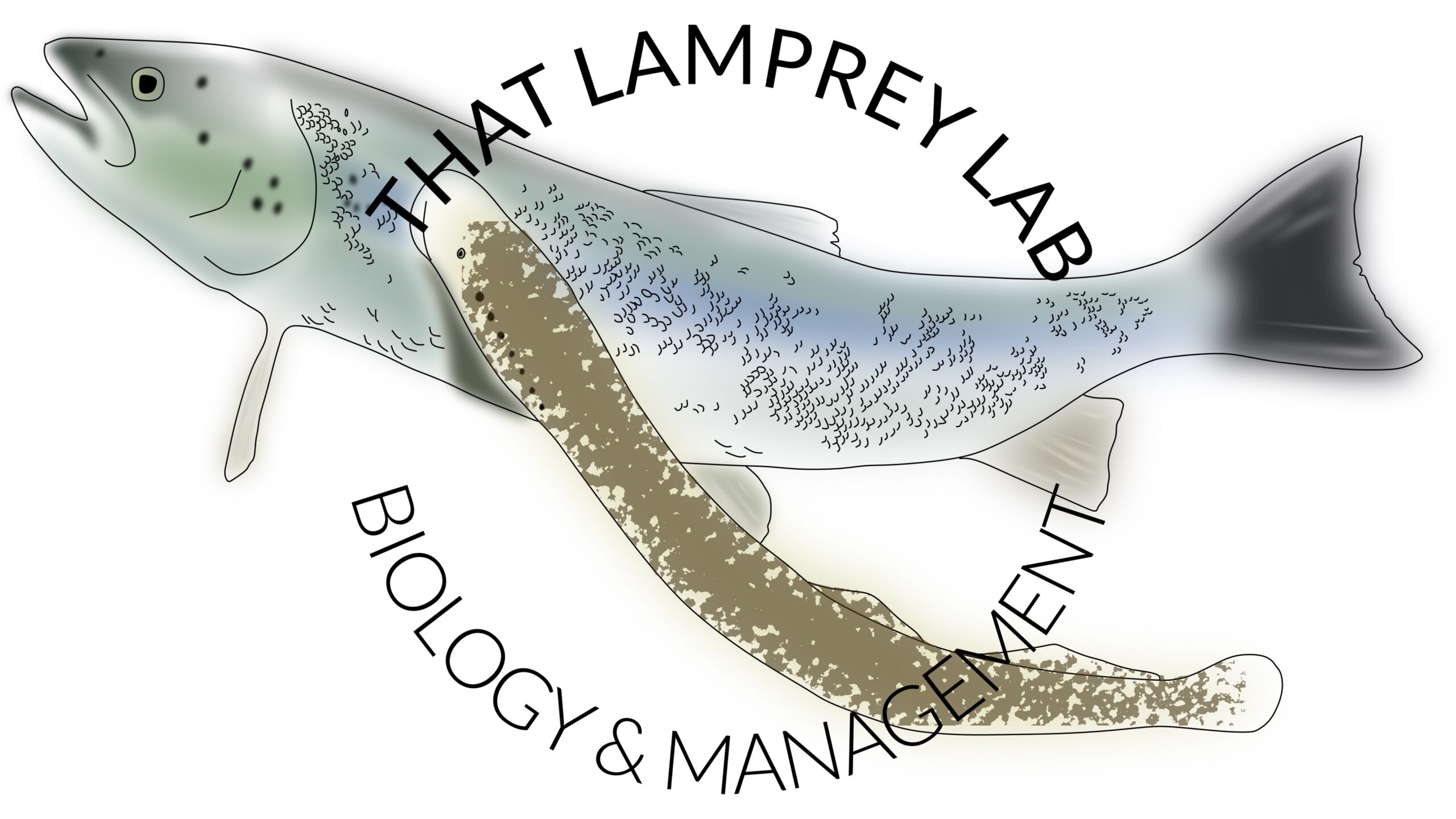2021
Hume, J.B., Bravener, G.A. & Johnson, N.S.
What can commercial fishery data in the Great Lakes reveal about juvenile sea lamprey (Petromyzon marinus) ecology and management? Journal Article
In: Journal of Great Lakes Research, vol. 47, S1, pp. S590–S603, 2021.
Abstract | Links | BibTeX | Tags: growth, sea lamprey, trophic ecology
@article{nokey,
title = {What can commercial fishery data in the Great Lakes reveal about juvenile sea lamprey (Petromyzon marinus) ecology and management?},
author = {Hume, J.B., Bravener, G.A. & Johnson, N.S.},
url = {https://doi.org/10.1016/j.jglr.2021.03.023},
year = {2021},
date = {2021-12-01},
urldate = {2021-12-01},
journal = {Journal of Great Lakes Research},
volume = {47, S1},
pages = {S590–S603},
abstract = {The Laurentian Great Lakes of North America support a large and profitable freshwater fishery, but one continuously beset by parasitism from the invasive sea lamprey (Petromyzon marinus). Despite being the life stage that inflicts damage to the fishery, therefore necessitating a bi-national control program, our knowledge of juvenile sea lamprey ecology is poor and their response to control efforts are not assessed. Incidental capture of juvenile sea lamprey by commercial fishers is one means to collect data on this enigmatic life stage, and in Lake Huron such data have been collated since 1967. Here, we explore incidental captures of juvenile sea lamprey and their hosts from northern Lake Huron between 1987 and 2017 (n = 33,246 observations) to address four objectives. Firstly, we document collection efforts by fishers to provide historical context to the dataset. Secondly, we pose and test a series of questions related to fishery encounter, host selection, growth, distribution, and sex ratio to highlight how these types of data can be informative regarding juvenile sea lamprey ecology. Results presented here could be used to develop biological hypotheses to be addressed in future work. Thirdly, we directly assessed whether juvenile sea lamprey capture data could be useful in corroborating trends observed in adult sea lamprey abundance and wounding, as well as in identifying abundance and wounding hotspots. Lastly, we summarize research and outreach efforts that have benefited from the capture of juvenile sea lamprey in recent years.},
keywords = {growth, sea lamprey, trophic ecology},
pubstate = {published},
tppubtype = {article}
}
The Laurentian Great Lakes of North America support a large and profitable freshwater fishery, but one continuously beset by parasitism from the invasive sea lamprey (Petromyzon marinus). Despite being the life stage that inflicts damage to the fishery, therefore necessitating a bi-national control program, our knowledge of juvenile sea lamprey ecology is poor and their response to control efforts are not assessed. Incidental capture of juvenile sea lamprey by commercial fishers is one means to collect data on this enigmatic life stage, and in Lake Huron such data have been collated since 1967. Here, we explore incidental captures of juvenile sea lamprey and their hosts from northern Lake Huron between 1987 and 2017 (n = 33,246 observations) to address four objectives. Firstly, we document collection efforts by fishers to provide historical context to the dataset. Secondly, we pose and test a series of questions related to fishery encounter, host selection, growth, distribution, and sex ratio to highlight how these types of data can be informative regarding juvenile sea lamprey ecology. Results presented here could be used to develop biological hypotheses to be addressed in future work. Thirdly, we directly assessed whether juvenile sea lamprey capture data could be useful in corroborating trends observed in adult sea lamprey abundance and wounding, as well as in identifying abundance and wounding hotspots. Lastly, we summarize research and outreach efforts that have benefited from the capture of juvenile sea lamprey in recent years.
2013
Hume, J.B., Adams, C.E., Bean, C.W. & Maitland, P.S.
In: Journal of Fish Biology, vol. 82, iss. 5, pp. 1708–1716, 2013.
Abstract | Links | BibTeX | Tags: trophic ecology
@article{nokey,
title = {Evidence of a recent decline in lamprey parasitism of a nationally rare whitefish Coregonus lavaretus in Loch Lomond, Scotland: is there a diamond in the ruffe Gymnocephalus cernuus?},
author = {Hume, J.B., Adams, C.E., Bean, C.W. & Maitland, P.S. },
url = {https://doi.org/10.1111/jfb.12075},
year = {2013},
date = {2013-04-05},
urldate = {2013-04-05},
journal = {Journal of Fish Biology},
volume = {82},
issue = {5},
pages = {1708–1716},
abstract = {Lamprey-induced scarring of the nationally rare Coregonus lavaretus, a known host of a freshwater-resident population of European river lamprey Lampetra fluviatilis, was found to have declined precipitously since the establishment of several non-native fishes in Loch Lomond. Evidence presented in this study points to the possibility that L. fluviatilis in this lake may have altered its trophic ecology in response to the negative impact that non-native species, in particular ruffe Gymnocephalus cernuus, have had on their favoured host.},
keywords = {trophic ecology},
pubstate = {published},
tppubtype = {article}
}
Lamprey-induced scarring of the nationally rare Coregonus lavaretus, a known host of a freshwater-resident population of European river lamprey Lampetra fluviatilis, was found to have declined precipitously since the establishment of several non-native fishes in Loch Lomond. Evidence presented in this study points to the possibility that L. fluviatilis in this lake may have altered its trophic ecology in response to the negative impact that non-native species, in particular ruffe Gymnocephalus cernuus, have had on their favoured host.
